Life at an Indonesian Sugar Plantation
A touch of humour: the recollections of Walter Mannot as a lively nine-year-old living in the former Dutch colony of the Netherlands East Indies
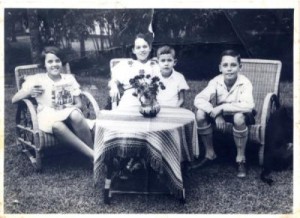
Walter Mannot was born in the in the Netherlands East Indies in Kemanglen in central Java in 1932. His brother Rob was five years older, and they were both adventurous and mischievous young lads who knew how to enjoy life.
However, when the Japanese invaded and occupied the country in 1942 Walter was interned with his mother and sister in a POW camp for three years. When just twelve years of age, he was removed from the women’s camp and interned with the men. Fortunately, he was sent to the same camp as his father and brother who were able to protect him – which was not the case with all young boys separated from their mothers. After the Japanese capitulated in 1945, Walter volunteered along with other Dutch boys at Kemajoran, a military airport near Djakarta (formerly Batavia). He was then repatriated with his family to The Netherlands on the Bloemfontein in 1946. Nice country, he recalled. But it was difficult to catch up on lost education and it was far too cold! In 1958, despite a good job as an industrial chemist, he decided to ‘adventure’ into the ‘beautiful warm country of Australia’. It was a wonderful decision for his hopes exceeded his expectations. He made friends quickly and found work, first as a technologist, and later as a research chemist in New South Wales. He first retired in 1993, and then opened a snack vending business before he decided to ‘retire properly’ in 2005.
Walter first told his story to daughter Helené’s class at Deniston Primary School in New South Wales around 1970. He just expected to talk to one class, but instead the whole school turned up in the library room. And then, twenty five years later in the mid-1990s he was given the opportunity to tell it to granddaughter Jessica Stanfield’s class at Ermington Primary School in New South Wales. They loved it! Now he has offered this story for the enjoyment of all children, and grandchildren, be they young or old. So please, sit down with a cup of coffee, and enjoy a number of stories from Walter’s early life (Dr. Sue Summers).
WALTER’S STORY:
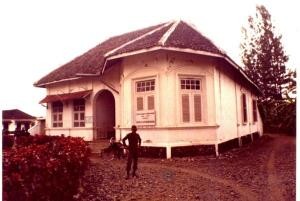
When I was asked to talk about Indonesia (then the Dutch East Indies) I immediately sent an e-mail to Holland, to my oldest sister, who is very academic and has a memory like a computer C drive. She responded with a six-page letter, which was an enormous help. My parents, brothers and sisters lived near a sugarmill, where my father was the chief engineer, responsible for the running of the factory and who built most of the infrastructure. This meant looking after the houses, electricity and water supply etcetera – in short maintaining all the assets. The factory was situated near Tegal, a small place in central Java. And some 30 km from the foothills of the Mount ‘Slamat’. Looking out of the windows of our living room we could see the impressive mountain in all its glory. The word ‘Slamat’ is used in the Malay (Indonesian) language to represent ‘bringing luck’.
But before going a bit further let me describe what our sugar plantation looked like: there were a series of large and tall buildings housing the factory and a very large factory yard. From the factory, railway tracks criss-crossed in many directions to go to the cane fields several kilometres away. Around the factory were brick houses, where the sugar factory employees lived, who were mostly of Dutch nationality. Not far away were the villages where Indonesian (Javanese) people lived, in neat bamboo houses. Many of them were employed in the sugar factory (probably several hundred during the milling season).
Our house was close to the factory and there was a majestic view of the Mt. Slamat. This was the second largest mountain in Java surrounded by dense bush, and home to many wild animals at the time. Our front garden came out to a main street that led to a market a couple of kilometres away. My brother and I were carrying a cage covered in brown fabric, so that it was not immediately obvious what was in it. In the cage was a black panther, which we carried with the intention of creating a practical joke. My father was known as an animal lover, who had an ongoing reward for anyone who brought in a young animal(s) whose survival was endangered, say by the loss of its parents, due to hunters etc. That is how we came to have a baby panther for an Indonesian caught him close to the foothills of the mountain and brought him to our house to claim a reward.
On market days there was always a large stream of traders passing our house along a footpath. A lot of them were women carrying their wares in baskets on their backs. Our plan was simply to walk to the market with the cage, mingle among the traders, take the panther out of the cage, put a lead on its collar and start walking in the middle of the people to see how they reacted. We went out of our gate and were walking past our front yard when suddenly, with a mighty bang, the panther slammed the door of the cage open, jumped out and started to climb up a tree in our front yard. The panther was used to us, but was still wild in nature. At the same time, a woman with a basket full of live chickens was walking past the tree.
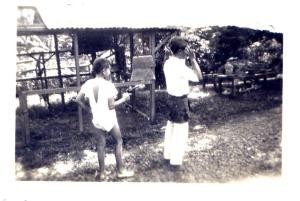
We quickly put the panther back in the cage and returned home. There, we put the panther back in its proper cage in the back yard. Sure enough, soon after that a couple of policeman, a Dutchman and an Indonesian (the police consisted of both Dutch and Indonesian people), arrived at our front gate on bikes. We ran to the front gate and said, “hallo officers, what is up? Is there an accident?” They said, “We want to ask you boys the same question, what happened with the panther?” “What panther?” we replied. By that time, we had all walked to our backyard and the police pointed to the panther’s cage and said, “That panther!” We were severely reprimanded by my father, lost several weeks pocket money, had to go to the village were the woman lived to apologize and to pay for the chickens.The panther jumped out of the tree and straight into the basket of chickens: an almighty scream from the woman, the basket fell to the ground, and chickens scattered in all directions. The woman did not look back but kept running, along with most of the other people in the direction of the market.
We were severely reprimanded by my father, lost several weeks pocket money, had to go to the village were the woman lived to apologize and to pay for the chickens.
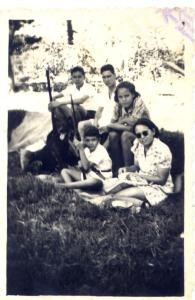
Let us have a quick look at what the people did on a sugar plantation:
First we had to get the sugar cane to the factory. Plantation workers cut the sugar cane in the cane fields and put the stems into open lorries. The matured canes have a length of two to five metres, and looked a bit like bamboo, having a hard outer shell and soft fibrous tissue inside. The lorries were then pulled several kilometres to the factory by water buffaloes. On arrival the lorries were weighed and the plantation workers given a receipt for payment. During the milling season the sugar factory sprung to life for six weeks. Javanese workers in shorts fed the furnaces of huge boilers. The boilers fed steam to the steam engines. Huge steam engines started driving the cane crushing rollers and other machinery, smoke started belching from the high chimneys, and the factory became a hive of activity. Those who remember the engine room in the film Titanic would easily get the picture. It was like that in the sugar factory, only the machines were much bigger.
When there were enough lorries filled with cane, a steam locomotive came and pushed the lorries towards the factory entrance, and the cane was then lifted out of the lorries by the factory cane cutters who cut the cane into smaller pieces and then dropped them on to conveyor belts. The conveyor belt then carried the cane pieces to giant steel rollers (one roller on top of the other).
The rollers squeezed the sugar juice out of the cane (this how a sugar factory gets its name of sugar mill). The squeezed juice was then collected in a vat, ready to be refined. The remains of the sugar canes were then transported to a series of large presses, and pressed into large blocks. (Sugar cane waste blocks.)
These blocks were then moved into large storage sheds, and left to be dried out. They were later used as fuel for the next milling season. This was the milling part of the sugar factory, and in modern sugar mills, the pressed sugar juice then goes to the refining section. Not to bore you with too many technical details – and because the refining process is somewhat complicated – I will mention it briefly. It started with the sugar juice being pumped into a series of vats.
In vat number one, chemicals were added to remove impurities, which sunk to the bottom. The purified juices then went to several large reaction kettles and finally to crystallizing pans, where different grades of raw brown sugar were formed by crystallization.
Some of the remaining liquid passed through a carbon filter to make a clear sugar solution, to which very fine sugar crystals were added. This caused the sugar to crystallize into clear white sugar. To summarize: sugar cane pieces go in one end of the factory and different types of sugar come out the other end.
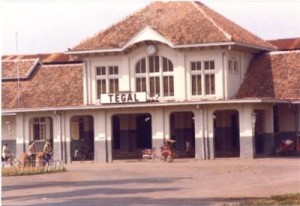
It is now time for another animal story
One morning, a man brought in two wild female baby piglets and a male pig. After paying the man, the piglets became the responsibility of my brother Rob and I.
The baby piglets were bottle fed with milk. They grew up quickly and my father gave us a part of the factory yard which was enclosed by a brick wall with wire mesh on top. The pigs were very boisterous, and liked chasing us, so my father had to build a special pen for them, with a lift-up door, where they were kept overnight.
Every morning we let them out, so that they could roam freely in the enclosure. The pigs loved to chase anybody who came into the enclosure and bump you on the legs with their heads. Now to keep feeding them safely, my brother and I built a series of poles with crossbars – something like you’d find in children’s play yards. Every day when we brought the foodstuff for the pigs, we played a game of hide and seek with them.
We climbed very quietly over the fence and quickly went to the overhead poles and as soon as we were there we would blow a whistle and the pigs would rush out. We dropped the food and quickly hung on to the pole to prevent them hitting us with their heads. Soon the male pig (Danny) became too dangerous for us because he had grown tusks. As farmers in the west know, wild pigs are very dangerous and can gore somebody (or dogs) to death.
On one occasion it was feeding time again. But this time we had some friends with us, who stayed on the other side of the fence and were only going to watch us. Well, at least that is what we expected them to do. My brother and I then climbed over the fence and our friends handed us the food. As quietly as we could we went to the overhead poles.
Unbeknown to us, one of our friends had quietly climbed over the fence and gone to Danny’s pen and let the boar out.
Things happened very quickly then! I was about to blow the whistle when I heard the grass behind me rustling. I turned around and there stood the boar – head down – ready to charge.
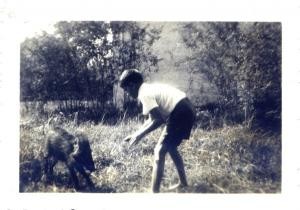
At the same time, my brother Rob, who was standing next to me gave a warning yell, and we flew to the overhead pole just in time. If not for my brother, the boar would have butted me. Rob then gave the boar an almighty kick in the behind. It was confused for a few seconds, then swung around ready to attack my brother. But Rob had just enough time to reach the cage, jump on it, swing the door open, so that the boar stormed into the cage. Rob then slammed the door closed. By now the other pigs had seen food lying on the ground and were distracted, so we both could run back to the fence and climb to safety.
Here’s a short word about the social structure of that time.The Javanese people and the Dutch lived in good harmony; there was nothing like apartheid going on.
The peoples’ living standard depended on the sugar factory, just as Newcastle depended on BHP. Living was easy during the Dutch East Indies period for the living standard was high, food was cheap, and the climate was perfect. There was practically no crime, no drugs and certainly no gangs. You could walk safely in the villages as Dutch boys.
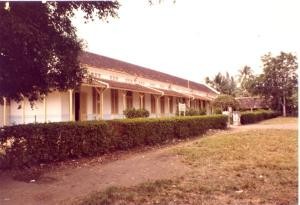
We therefore hatched a rescue plan. First, to get the keys to the enclosure, we went to a small room near the factory entrance, the key room.The invasion by Japanese troops was imminent. Therefore my father decided to give the pigs away to a rich Chinese restaurant owner. But Rob did not trust the Chinese man and thought the pigs would finish up as sweet and sour pork.
My task was to distract the key room attendant, whilst my brother quickly removed one of the duplicate keys and substituted another key from the big keyboard in its place. While the operation was a success, this proved to be the easy part. We had all our combined pocket money which had been saved over several weeks and was a fortune for a dokar owner. (A dokar is a small cart drawn by a horse.) We then offered the money to an owner we knew, with the instruction of strict secrecy.
Even so it took enormous persuasion on our part to get him to agree. At 9 o’clock, on a certain date, he had to go to the enclosure gate and load the pigs into his cart. Rob was then to go with him in the cart and drive for approximately eight kilometres passing our hospital on the way to the beginnings of the jungle mountain foothills. And then Rob was to go alone with the pigs into the dense forest and release them – which was an act of great bravery for a small boy. Armed adult Javanese men were scared to go into this forest in daytime, let alone at night. I had to stay at home and find an excuse for anybody who came into our room that night and explain that Rob had gone to the toilet.
To this day, I have no idea how Rob succeeded in getting three big pigs into an unstable cart with only primitive petroleum lamps to lead the way. (It is pitch black in Indonesia shortly after 6 pm on moonless nights.) Amazingly, the journey went well, the hospital was passed without any problem, and the dokar with Rob and the pigs proceeded to the start of the foothills.
Suddenly the cart stopped and the cart owner said that this was as far as he would go. After a short argument, my brother paid him, reminding him of the secrecy he had to keep. The journey was a little short of the end destination, and because of the pitch darkness, Rob mistook the area for the beginning of the jungle and led the pigs straight into a bushy area. After a while he’d had enough and managed to distance himself from the animals and went on his way home.
Late after midnight he arrived back safely and unnoticed, excited and happy, and a little bit sad too. In the meantime the pigs in unfamiliar terrain were far from happy, so they began trotting back home. Suddenly they discovered the lights of the hospital and stormed past the fear-stricken guard straight into the halls of the hospital. This caused enormous pandemonium.
You can imagine, flying bedpans, screaming nurses, hospital trolleys dislodged and flying in all directions, and deadly-scared patients pulling the blankets over their heads.
Finally a doctor friend of the family, recognized the pigs and was able to lock them up in a room.
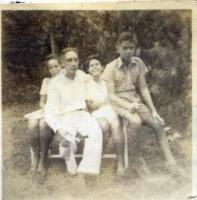
Telephones were not generally used in the Dutch East Indies at that time, so the doctor dispatched two bike riders to our house. It was the milling season and my father was deadly tired, had gone home to bed, and was now fast asleep.
Early in the morning a ‘bang, bang, bang’ could be heard on the front door and windows. Javanese messengers were yelling: “Mister, mister, your pigs are running wild in the hospital”. So my father grabbed my shaking brother, ran to the car, retrieved the pigs from the hospital and placed them safely back into our enclosure. You can imagine how much trouble we were in! (However, I do think my father was secretly proud of my brother.)
This story had a happy ending for the Chinese owner – who was impressed with this episode and all the publicity – built a large cage for the pigs and used them as show pieces.
Some extra information:
We had in our garden:
- two large aviaries, one holding a variety of birds;
- a large cage for a goat;
- a large pond for ducks;
- a horse and two dogs allowed to roam free
In the large yard;
- a Hornbill bird, and
- not to forget small baby crocodiles.
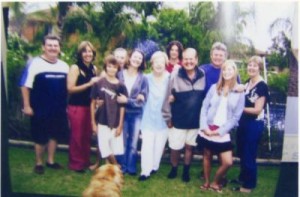
Editor’s footnote: some of these animals feature in other stories that Walter has told, and he will send them to us for inclusion on the website. Watch this space!





















